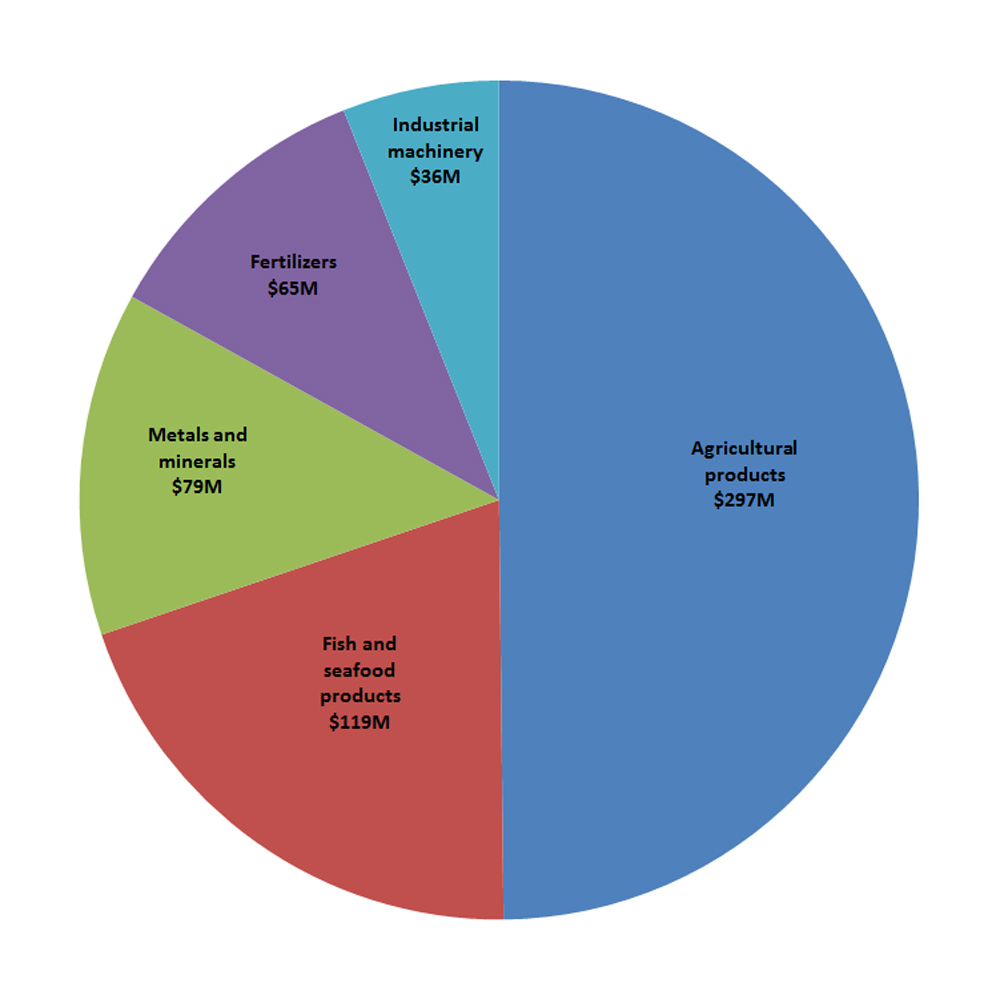CPTPP partner: Vietnam

How the CPTPP helps Canada-Vietnam trade and investment
- The CPTPP provides a rules-based trading environment and enhanced market access for exporters and investors, and establishes duty-free access for trade in goods between Canada and Vietnam, eliminating tariffs for key Canadian exports, including:
- beef (tariffs of up to 31% on fresh, chilled and frozen beef will be eliminated within two years, and tariffs of up to 34% on all other beef products will be eliminated within seven years)
- pork (tariffs of up to 31% on fresh, chilled, frozen and prepared pork products will be eliminated within nine years)
- canola (tariffs of 5% on canola seed were eliminated upon entry into force, while tariffs of up to 20% on canola oil will be eliminated within seven years) and
- ice wine and whisky (tariffs of up to 56% will be eliminated within 10 years).
- lobster (tariffs of up to 34% on prepared lobster will be eliminated within three years)
- salmon (tariffs of up to 18% on fresh, chilled and frozen salmon were eliminated upon entry into force) and
- fish fillets (tariffs of up to 18% on frozen fish fillets were eliminated upon entry into force)
- carton boxes and packing containers (tariffs of up to 24% will be eliminated within three years);
- newsprint (tariffs of up to 25% will be eliminated within three years) and
- uncoated paper and paperboard (tariffs of up to 27% will be eliminated within three years)
- industrial machinery (tariffs of up to 25% will be eliminated within eight years)
- chemicals and plastics (tariffs of up to 31% will be eliminated within 10 years)
- metals and minerals (tariffs of up to 40% will be eliminated within 10 years) and
- cosmetics (tariffs of up to 30% will be eliminated within four years).
- agricultural goods:
- fish and seafood products:
- forest products and value-added wood products:
- industrial products:
- environmental services and
- business services.
Sectoral opportunities in Vietnam
- Education:
- Opportunities exist in both education recruitment and partnership.
- Vietnam is one of the biggest education services importers in the world with about 130,000 Vietnamese students studying abroad, and $3 billion per year spent on overseas study.
- Vietnam ranks first in Southeast Asia and fifth globally as a source country for international students in Canada, with around 14,095 Vietnamese students studying in Canada in 2017.
- ICT contributes 7% to Vietnam's GDP, topping US$65 billion in 2016.
- In 2017, the 4G network was rolled out across Vietnam, which has laid the groundwork for the development of the internet of things, big data and analytics, finance technology, applications for health care, clean technology, and transportation.
- The sector accounted for approximately half of Canada’s exports to Vietnam in 2016.
- Vietnam is ranked the second export destination for Canada in this sector (after Indonesia).
- Opportunities also exist for Canadian animal genetics, patented feed solutions and other agri-business inputs and technology for the food production industry.
- Improvements in mass transit and road infrastructure are creating opportunities in planning and design, project management, advanced engineering and intelligent control systems.
- Smart city planning is also an emerging industry.
- As the government develops an action plan to address climate change, opportunities will emerge in renewable energy (solar and wind), waste management (including waste-to-energy) and waste water treatment.
- The expansion of air traffic, as well as the number of air carriers, fleet and aircraft types, is increasing demands for maintenance, repair and overhaul, and air traffic control and pilot training.
- The International Air Transport Association forecasts that Vietnam will be one of the world’s 10 fastest-growing aviation markets in the next two decades.


